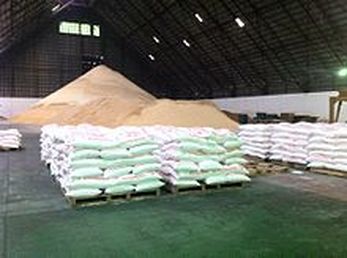 Image From: http://en.wikipedia.org/wiki/Economy_of_the_Philippines Image From: http://en.wikipedia.org/wiki/Economy_of_the_Philippines The Republic of the Philippines is first and foremost a country that is founded on agriculture. Around two thirds of the populace makes their living through farming, and 47% of the land is abundant in agriculture. Ironically though, even if the nation is rich in natural resources and huge agricultural land, the farmers are still marginalized and poor. The Philippines had to bring in agricultural items such as rice (the staple food of the Filipino) because of minimal productivity, a population that is still growing at a fast rate, and the demolishing of major agricultural lands to make way for commercial use. During the year 2008, the local government used a lot of its funding for rice imports, which were then sold at cheap prices. While this cost the consolidator in the Philippines and the government a lot of money, they did this to prevent widespread panic amongst the citizens. Rather than doing service for the farmers, the drive of the Philippines to be economically independent via conventional farming that employed extensive and commercial agro-chemicals and inorganic fertilizers resulted in farmers who sank deeper into poverty and extreme debt. A lot of these rice farmers have become dependent on the seed subsidies, fertilizers or price support from the local government. The problem was that some of their produce declined or stagnated because of applying all of these non-organic instruments for long durations. A concerned group of people in PAKISAMA (Pambansang Kilusan ng mga Samahang Magsasaka) conceptualized a project that would boost the services of the organizations that the farmers were involved in, as well as their communities to guarantee collective, coordinated, and institutionalized actions for surviving the fluctuating food prices via policy dialogue, marketing, and sustainable agricultural manufacturing. These actions would concentrate on the consolidator in the Philippines and the minor farmers who produce vital food items in the county and streamline the process so that all project activities could easily be designed and implemented.
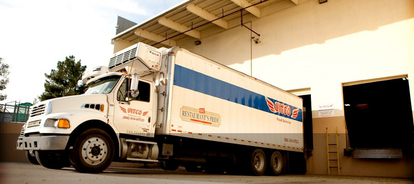 Image From: http://www.ifdaonline.org Image From: http://www.ifdaonline.org A moat is defined as a broad and deep ditch which may be filled with water or dry, and historically surrounds a town or castle to offer it a primary defensive line. On the other hand, an economic moat is a technical term that was popularized and invented by business tycoon Warren Buffett. According to Buffett, this term talks about the ability of a business to keep their competitive advantages over the international food distributor and the competition to safeguard its market share and long-term profits from other companies that offer similar goods and services. To make a long story short, the economic moat is a factor that can possibly provide a sustainable competitive advantage to an industry. Here are some ways for an enterprise to get an economic moat: Low Cost Manufacturing The corporations that can deliver their services or commodities at an affordable cost (normally because of captive raw material sources or economies of scale), have a unique competitive advantage since they have the power to undercut the competition on price. Examples include coal mines or iron ore mines. High Switching Expenses Switching expenses refer to the one-time costs or inconveniences that the consumers go through when they are transferring from one service or item for another. The best examples of this include banks, ISPs (Internet Service Providers), and telecom corporations. The Network Effect This effect takes place when the value of a specific service or product goes up for the existing and new customers as more consumers use it. Excellent examples of the Network Effect are social networking sites such as LinkedIn or Facebook, and the networks that credit cards use. Subtle Assets A handful of firms have an edge over their competition due to distinct subtle, intangible or nonphysical assets which involve an international food distributor. These intangibles cover things like geographic advantages, brand names, government approvals, and intellectual property rights.
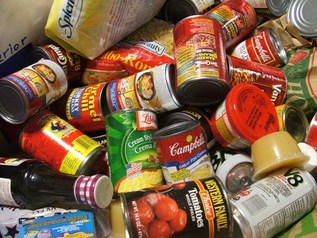 Image From: http://jclocalaid.org Image From: http://jclocalaid.org The Philippine government has been executing a Food Assistance Campaign as a temporary calming invention for the growing number of its children who are malnourished. Complementary feeding has been a popular and effective strategy that has been implemented in nations that are concerned with the issue of malnutrition. The Food Assistance Campaign reportedly covers an average of 0.3 million lactating and pregnant women, 1.2 million schoolchildren and 1.3 million preschoolers per year. Critics are claiming that food assistance is a waste of resources, a temporary solution to the problem, and instigates a mentality where people will not work hard and just expect hand-me-downs. However, based on the statistics of a Philippines food distributor, this program may have advantages in terms of political impact, social or behavioral aspects, and nutritional factors. The instances where food assistance had a positive effect on the social and behavioral factors of Filipinos include changes in practices and attitudes of child care providers, and more mothers learning more about the importance of child feeding or joining community services. As far as positive political impact is concerned, it involves the demonstration of how concerned the government is for a big majority of the population. The decision of the government to implement a food assistance campaign depends on the purpose of the program. If the primary goal is to revitalize the mothers and the children who are malnourished, it is best to perform supplementary feeding. On the other hand, if the goal is preventive (referring to helping the children who are at risk of stopped growth due to their situation in life, such as living in a house with limited resources), increased usage of food from sources such as food-for-work, food subsidies or food stamps can dramatically enhance welfare. Regarding the subject of supplementary feeding campaigns, the nation has employed different schemes for dispersing food rations thanks to the advice of a Philippines food distributor. The government needs to address the concern of the proper times for feeding because the nutrition workers regularly have a hard time encouraging mothers to bring their kids to the feeding centers.
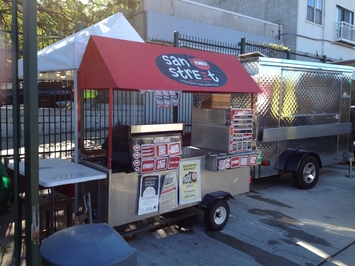 Image From: http://upnorthbusiness.files.wordpress.com Image From: http://upnorthbusiness.files.wordpress.com The main objective of choosing a food dealer for your mobile food business is to locate one that will deliver fair trading prices and products of top quality. The best part about this practice is that your business has the chance to collaborate with a number of food traders, but keep in mind that there are instances where your firm needs multiple dealers for your merchandise, particularly produce and meat. The good news is that you might be able to locate food suppliers who can offer most of your supplies from one facility. Major national dealers can deliver big discounts on the prices of their goods since they disperse a lot of merchandise. While their small orders have the tendency to be too much for one mobile food business, you can befriend other franchises in your location to place enough bulk orders to comply with their minimums. You probably will not be able to buy everything you need from one dealer because monitoring many invoices will waste your effort and precious time. Try to achieve your requirements with the least number of suppliers. So that you will not take too long in searching for a particular trader, here are some additional tips for locating prospective suppliers: Use the power of the Internet You can find almost everything you need for your business by performing online searches. Employ online business directories which catalog dealers and even locate traders according to the products that you are searching for. A lot of these websites allow you to input your zip code so that you can narrow your specific searches within your locale. One important advantage of using internet directories is that they regularly give information on traders who sell items at competitive rates. Go to trade shows about the restaurant industry Food suppliers can get useful information on the different services and products that a dealer showcases when they attend these conventions. You can get trader literature, and have the chance to speak to the representatives of restaurant suppliers.
 Image From: http://www.ho-chunknation.com Image From: http://www.ho-chunknation.com The questionnaires about nutrition expose the fact that there are households that shelter some malnourished individuals, despite the similarities between the structure of the house and the income level. Most causes have been credited to this occurrence, like differences in demand for time, food preferences, purchasing power, social networks, kin, and so forth. All of these aspects will impact the household as far as its capacity to get food is concerned, but they do not clarify what happens to the consumables when it gets to the house. However, the knowledge about the various ways of food distribution within the house could give answers as to who gets the most benefits, and to what degree these advantages are. Similar to the limited knowledge about the allocation of food in the house, there is also limited info on how the food campaigns could impact this. But then, food campaigns that concentrate on the residential area are created with particular objectives in mind. Being familiar with the variance in intra-household food allocation practices can provide closure to the reason for the desired result to not be achieved. Information about these intra-household food allocation processes can help in the planning and efficient implementation of future campaigns. Any person who is studying this must keep in mind that not all the food in the house that is eaten may be distributed using the same system. The staple food (in the case of the Philippines, it is rice) may be abundant, so it will be easier to dispense in any method, while other foods that are nutrient-dense should be distributed with more care. There are societies where a lopsided meat share may go to the breadwinner, while fruits or dairy items are normally fed to the children. Another normal food distribution pattern involves all the members of one household will eat a single formal meal together for one day, with cooked food distributed in a specific manner, but most of the time the people in the house eat whatever food is available.
 Image From: http://www.philippine-grocers.com Image From: http://www.philippine-grocers.com Dynamic modifications are happening in the competitive and demand structure of the vegetable industry in the Philippines, and these result in alterations to the supply distributions. It is understandable that the consumers will be very concerned about the sustainability and convenience of the production systems, their health, and traceability and food safety because of all these sudden changes. To address these issues, the conventional supply distribution is slowly being replaced by a number of alternative production systems as far as the vegetable industry is concerned. Here are some of these emerging supply chains that are being handled by a Philippine food consolidator: The Market Specialist Chain This arrangement that is being closely monitored involves the supermarket suppliers concentrating on strategies to deliver everything that their respective chain needs. The market specialist will supply a broad inventory of vegetables, including a mix of food items that are tagged and coded, packed, pre-cut or minimally processed. These individuals will place a brand on the merchandise, specifically the salads that they pack to assure the consumers that the food items that they will buy have passed quality control standards. In this kind of business partnership, the supermarkets will reap the benefits because the market specialist will deliver high quality items that they normally need at a fast rate. The Product Specialist Chain Aside from the conventional vegetable supply distribution which was the central supply source of the supermarkets, a particular chain that specializes in one product is the focus of this supply distribution. An example is the tomato, which can be planted in most areas in the country (although Baguio and Bukidnon grow a lot of tomatoes due to the colder climate in those areas). One popular Philippine food consolidator that operates in Davao, Quezon City, Cebu and Cagayan de Oro is known as the Fresh Corporation (or FreshCorp). They collect their tomatoes from farms at Bukidnon, Ilocos Norte and Cavite and distribute up to 20% of the tomato supply in Metro Manila during the months of July to December. The company takes care of their farmers while meeting the requirements of the supermarkets and their buyers.
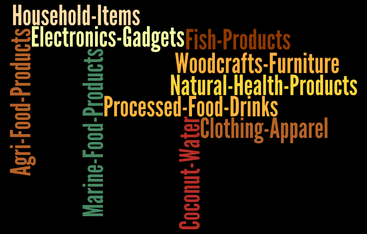 Image From: http://www.manilatrade.com/ Image From: http://www.manilatrade.com/ The Republic of the Philippines can be found at the west side of the Pacific Ocean, and is a Southeast Asian sovereign state. This country is susceptible to typhoons and earthquakes due to its position on the Pacific Ring of Fire, but this tropical weather has blessed the nation with diversity thanks to its varied natural resources. The people of this country know how to maximize the use of its abundant resources, and have been exporting a lot of these raw items to other countries for years, including electronics, fruits, and even manual labor. This nation is proud of these Philippine export products because of their long lasting success in the market: Electronics Intel is the main producer of the powerful Pentium and Core central processing units which serve as the brains of many computers and portable devices in the market today. Their facility in the Philippines has been in operation for more than 30 years, exporting different computer products. Another major exporter is the plant of Texas Instruments in Baguio, which has been manufacturing DSP chips for Nokia and Sony Ericsson mobile phones for over two decades now. The Toshiba brand used to make laptop computers in its office in Sta. Rosa, Laguna. In 2005, it started concentrating on the creation of computer hard disk drives. Fruits The Philippines is the global Top 2 when it comes to exporting bananas, with Japan importing a huge percentage of the product. This nation also imports pineapples and mangoes, but bananas continue to rake in most of the profit, amounting up to $250 million in revenue. Copper While the people living in this country know how to tap their natural resources, copper has an estimated $840 billion in untouched mineral deposits. This mineral is transformed into a conductor wire that is used to transfer power or sound to electronics such as earphones, power adaptors, transistors and capacitors. People One of the biggest Philippine export products is of course, the people themselves. Without their efforts, other countries will not enjoy the raw materials that they import. About 10 million Filipinos work and live in other countries to earn money for their loved ones.
|
 Image From: http://en.wikipedia.org/wiki/Economy_of_the_Philippines
Image From: http://en.wikipedia.org/wiki/Economy_of_the_Philippines 





 RSS Feed
RSS Feed